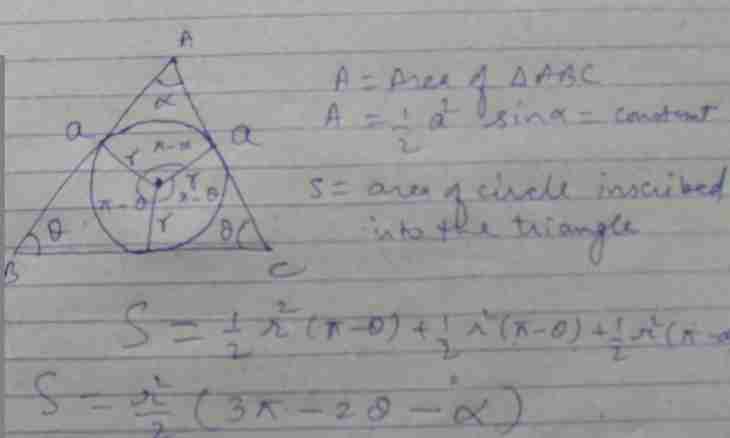If it is necessary to find the area of the most usual triangle set by straight lines it automatically means that the equations of these straight lines are set too. The answer will also be based on it.
Instruction
1. Consider that the equations of straight lines on which the parties of a triangle lie are known. It already guarantees that all of them lie in one plane and are crossed among themselves. It is necessary to find points of intersection, solving the systems made of each couple of the equations. At the same time each system will have without fail the only decision. The task is illustrated by figure 1. Consider that the plane of the image belongs to space and that the equations for straight lines, are set parametrically. They are presented in the same drawing.
2. Find coordinates of a point And (xa, ya, za), f1 lying in crossing and f2 and work out the equation where xa=x1 +m1*t1 or xa= h2 +m2*τ1. Therefore, x1 +m1*t1= h2 +m2*τ1. For coordinates of ya and za it is similar. There was a system (see fig. 2). This system is superfluous as for definition of two unknown there are quite enough two equations. It means that one of them is a linear combination of two others. Earlier it was stipulated that the decision is guaranteed unambiguously. Therefore leave two, in your opinion the simplest the equation and, having solved them, you will find t1 and τ1. There is enough also one of these parameters. After that find ua and za. In a short form basic formulas are given in the same figure 2 as the available editor can cause discrepancies of formulas. In (xb, yb, zb) and With (xc, yc, zc) find points by analogy with already written down expressions. Just replace "excess" parameters with sizes corresponding to each of again applied straight lines, leaving invariable numbering of indexes.
3. Preparatory actions are complete. The answer can be received on the basis of geometrical approach or algebraic (more precisely than vector). Begin with algebraic. It is known that the geometrical meaning of the vector work is that its module is equal to the area of the parallelogram constructed on vectors. Find, say, vectors of AB and AC. AV = {xb-xa, yb-ya, zb-za }, AC= {xc-xa, yc-ya, zc-za }. Define their vector work [AB×AC] in a coordinate form. The area of a triangle is equal to a half of the area of a parallelogram. Calculate the answer according to a formula S=(1/2) |[AB×BC]|.
4. For receiving the answer on the basis of geometrical approach find lengths of the parties of a triangle. and = | BC |= √ (xb-xa) ^2+(yb-ya) ^2+(zb-za) ^2), b= | AC |= √ (xc-xa) ^2+(yc-ya) ^2+(zc-za) ^2), c= | AB |= √ (xc-xb) ^2+(yc-yb) ^2+(zc-zb) ^2). Calculate poluperimetr p=(1/2) (a+b+c). Determine the area of a triangle by Heron's formula S= √ (p(p-a) (p-b) (p-c)).

